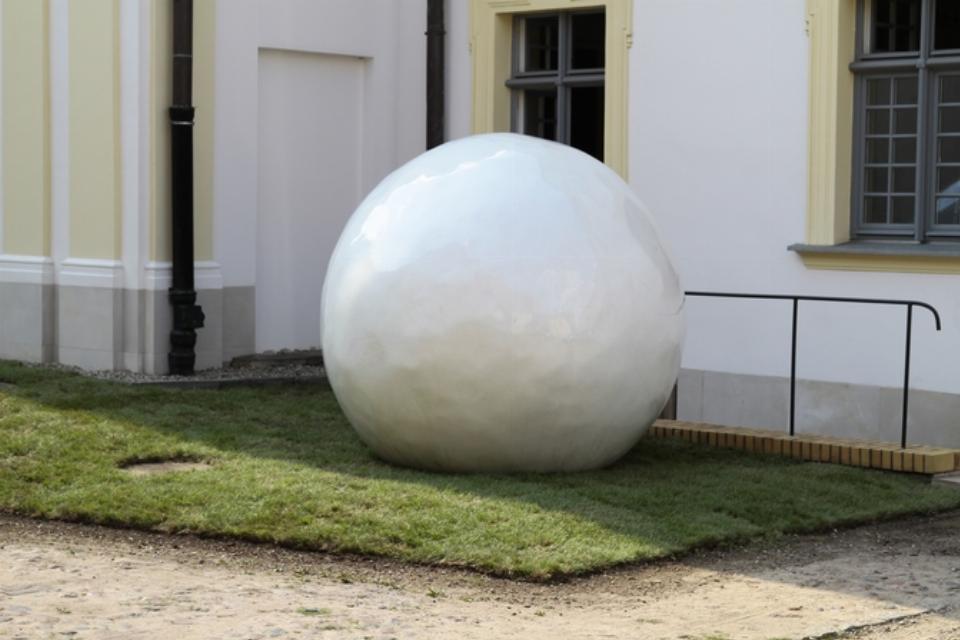Maurycy Gomulicki
The Pearl
Maurycy Gomulicki
The Pearl, 2009, object, resin, glass fiber, car varnish, ø 224 cm
Collection II of the Arsenal Gallery in Białystok. Work donated to the Arsenal Gallery by the Art Residence Centre in Wigry

The Pearl was made at the Art Residence Centre in Wigry on the invitation of Agnieszka Tarasiuk, the centre’s erstwhile director. Locals and kids from the nearby children’s home took part in the making of the object, turning it into an element of the centre’s socio-educational programme.
The unrealistic ball should be seen in the context of what Maurycy Gomulicki calls the culture of ecstasy – a multi-dimensional idea, touching on sexuality and the sensuality of matter, as well as on social and political issues. The sensuality of the pearl refers also to the slogan “pink is not dead,” a constant element in the artist’s projects which is rooted in the European perception of pink as a colour of sweetness, kitsch and ecstasy. Pearls are perceived in a similar way.
The work by Gomulicki, imbued with symbolism, is a sublime game with both the history of art and with the manifold meanings of the pearl. The artist uses their ambivalence skilfully. A small ball extracted from within the shell of the pearl oyster had a taste of exoticism that stimulated the colonial and commercial ambitions of modern empires. The irregular pearl (barocco) not only gave its name to an epoch in European culture, but it also embodied flamboyant fantasies and the love for luxury. The pearl is an object of desire, a proof of wealth, a symbol of purity and an attribute of Christ and the Virgin Mary. Pearls are a symbol of perfection for their sparkle and spherical shape – mystics saw them as a product of exalted instincts and as a spiritualization of matter. They were used as aphrodisiacs and remedies, though it was also believed that they caused tears and brought bad luck.
The Pearl gains new meaning in the context of the Baroque monastery where it was created. In a sense, the ball made of artificial material reflects the condition of the monastery, which, having been rebuilt after its destruction during the war, is also half artificial. The object of desire was situated in a location whose primary context is its identity as a sacred place. Thus the ecstasy of the senses was to grow in a place from which they had been eradicated. The setting is therefore perfect for showing the ambiguity of The Pearl: a tool for diversion, abundant in hidden erotic meanings and a Christian symbol of beauty.
Izabela Kopania

PLAN YOUR VISIT
Opening times:
Thuesday – Sunday
10:00-18:00
Last admission
to exhibition is at:
17.30